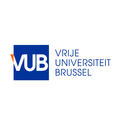In short
Printed paper and board materials that come into contact with our food and drinks are widely used: daily life examples include paper lunch bags, coffee cups, food labels (e.g. on fruit) and cardboard packaging boxes (e.g. for milk, juice, rice, cereals). Although unintentionally, trace amounts of these materials can end up in the food/beverages and in the worst case lead to negative human health effects such as cancer. The PRIMISTRA project aimed to detect potential carcinogenic chemicals present in this type of materials.
Project description
An increasing number of food contamination crises is due to the migration of printed paper and board food contact material (FCM) components into food and beverages. At the European level, no harmonised regulation is in place for this FCM type and subsequently, thousands of non-officially evaluated substances can be used in printing inks and paperboard for food contact applications.
Since performing comprehensive safety studies for thousands of chemicals is impossible in the short term, a prioritisation strategy was developed to identify among this large number of chemicals, those with the highest concern for human health. The screening focuses on genotoxicity, an important toxicological endpoint routinely investigated in safety evaluations based on its well-established link with a range of adverse human health outcomes including cancer. For ethical reasons and in line with the current shift towards the reduction, refinement and replacement of animal studies (3R concept), the priority ranking was carried out using alternative non-animal testing methods. In addition to the combination of in silico predictions and in vitro experiments, existing literature data is collected to further prioritise the substances and to obtain an elaborate overview of their safety evaluation status. As a result, printed paper and board FCM substances were ranked according to their likeliness to induce genetic damage. For the high priority substances, in-depth safety evaluations and data on their migration from and actual use in FCM are most urgently needed.
The PRIMISTRA project thus allowed to efficiently allocate resources and time to the compounds of highest concern. Although the project focused on limiting consumer exposure to potentially harmful substances that can be used in printed paper and board FCM, the developed strategy can also be applied to prioritise numerous other groups of substances, e.g. industrial chemicals lacking a (recent) safety evaluation.
Added scientific value
The PRIMISTRA project has identified substances that can be used in printed paper and board FCM and are of high concern for human health based on their potential to induce genetic damage. Moreover, the developed strategy has allowed a preliminary safety ranking of all substances listed for their use in this (and potentially other) FCM type(s). Additionally, the current strategy could be applied for the prioritisation of various other substance collections. The results obtained in the PRIMISTRA project not only represent a large collection of genotoxicity data on a vast number of chemical compounds, but furthermore demonstrate the value of (combination of) in silico prediction tools, in vitro methods and literature data sources for prioritisation purposes. The PRIMISTRA dataset also provides a comprehensive overview of the evaluation status of printed paper and board FCM substances.
Added value for society
The outcome of the PRIMISTRA project provides important information on safety concerns associated with substances that can be used in printed paper and board FCM. This knowledge can be used to implement appropriate safety measures to limit potential health risks for the consumer population (e.g. substance usage ban).
Sciensano's project investigator(s):
Service(s) working on this project
Partners



